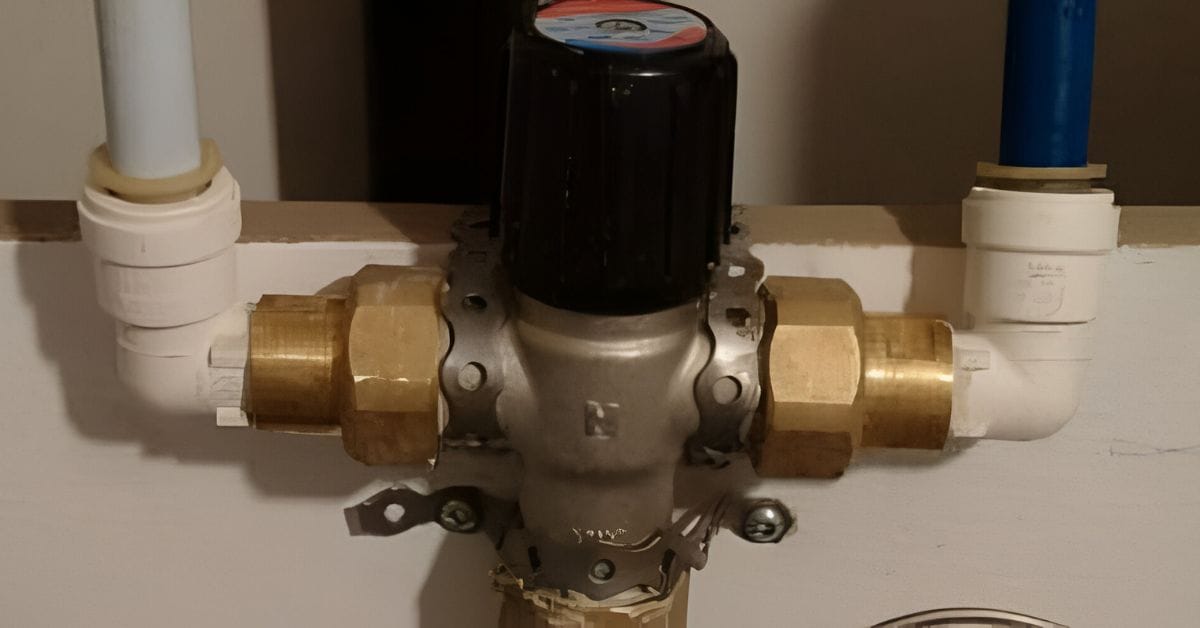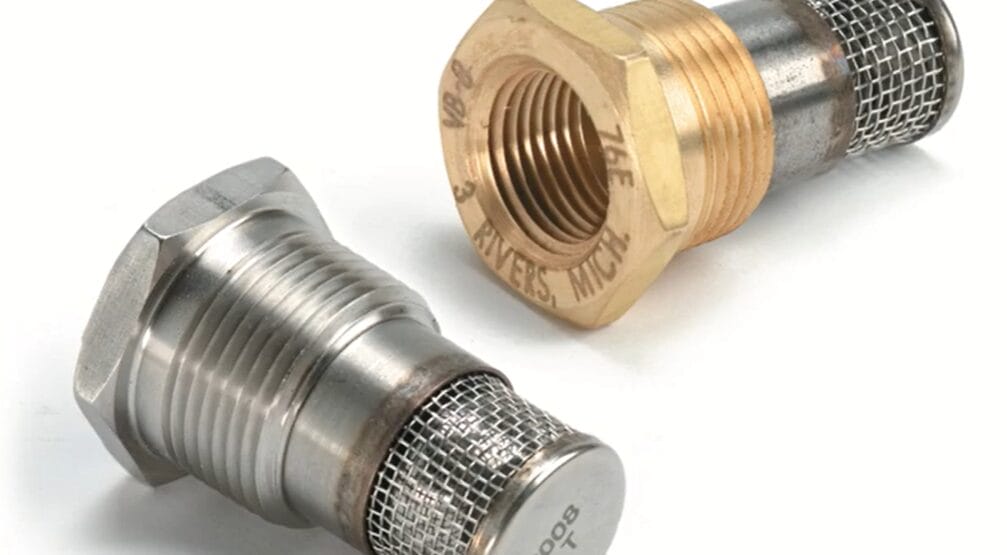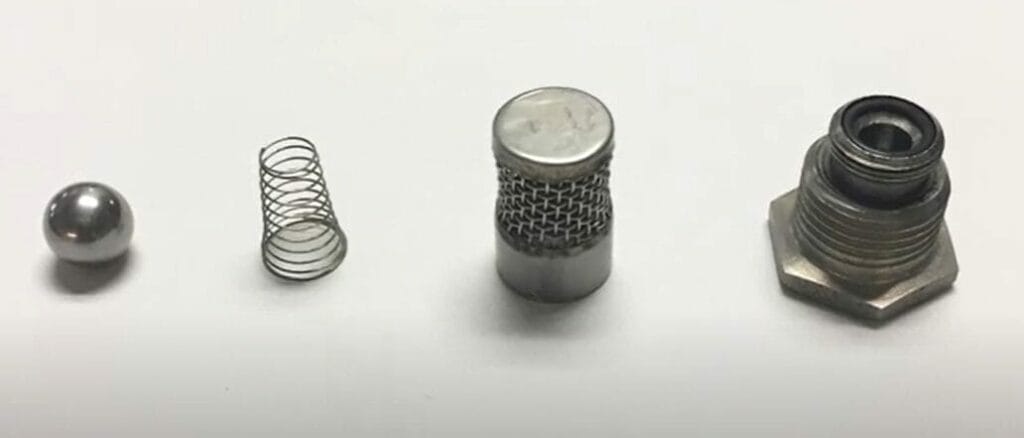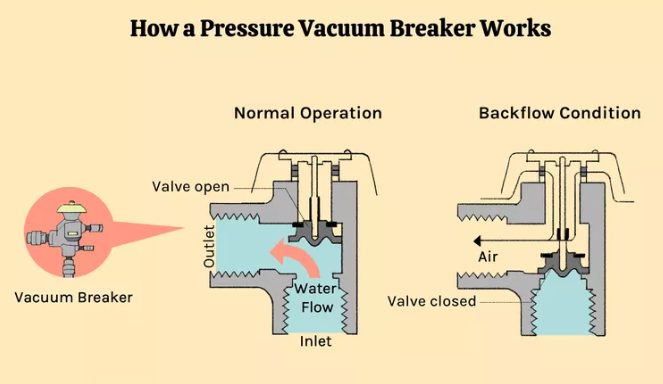How Does a Vacuum Breaker Work? (Guide)

Have you ever encountered a device called a vacuum breaker and wondered what magic it performs? I’m here to lift the curtain on this unsung plumbing hero. Trust me, it’s a game-changer in protecting our water systems.
The Vacuum Breaker works like a normal check valve. Through the air inlet, air from the outside can get into the system. But the vacuum breaker shuts down tightly when water or steam tries to get out.
Stick around, and I’ll break down the ins and outs of this plumbing powerhouse.
Understanding the Mechanics of a Vacuum Breaker
Let’s dive right into it. The beauty of a vacuum breaker lies in its simplicity and role in keeping our water safe.

One compelling detail about vacuum breakers is that they’re proactive protectors. You see, they don’t wait around for contamination to happen. The moment the pressure starts to dip, they jump into action, preventing any backflow right then and there.
They work on the principle of air inlet valves. When the system is shut off, or a back siphonage occurs, the air flows in through the vents, and this influx of air stops the backflow dead in its track.
As we talk mechanics, it’s cool to note that vacuum breakers come in different styles:
- Hose Bibb Vacuum Breakers that you can screw onto your garden hose faucet.
- Atmospheric Vacuum Breakers must be installed at least six inches above the highest usage point.
- Pressure Vacuum Breaker Assemblies that are installed right into the water supply line.
Each type is engineered to fit the specific needs of different water systems, from residential gardening hoses to more complex irrigation systems. By preventing contaminated water from reversing its flow, these devices ensure that our drinking water is as clean and safe as possible.
So next time you’re sipping a cold glass of water, remember there’s a little device working tirelessly to keep it clean – the unsung plumbing hero, the vacuum breaker.
Essential Components of a Vacuum Breaker and Their Functions
When diving into the nitty-gritty of a vacuum breaker, you’ve got to know about its key players. These are the components that team up to safeguard our water systems.

- Body: The body of a vacuum breaker is the main structure. It connects to your piping and houses all the essential components, ensuring everything is in place and functions as intended.
- Check Valve: The check valve is crucial for controlling the direction of water flow. It remains open under normal pressure to allow water passage. However, in the event of a pressure drop, it quickly shuts to prevent any backward flow and potential backflow issues.
- Air Inlet Valve: This component acts as a safety mechanism. When the check valve closes, the air inlet valve opens. This introduction of air prevents vacuum formation, which is crucial for stopping siphoning and keeping the system safe from contaminants.
- Vent Float: Positioned above the check valve, the vent float plays a balancing act. It seals the air inlet under normal conditions. But, when the pressure drops, the air inlet valve opens, adapting to the change and maintaining system integrity.
These components form a cohesive unit, ensuring the vacuum breaker operates effectively to protect water systems from contamination and backflow.
The Role of Vacuum Breakers in Preventing Backflow
Picture this: Your home’s water system is like a mini fortress, and the vacuum breaker is the unsung hero, keeping contaminants at bay. Let’s dive into what makes these gadgets crucial for water safety without getting too technical.

- Sudden Change in Water Pressure: A sudden drop in water pressure can cause backflow – that’s when the water direction reverses, potentially bringing contaminants into your clean water. The vacuum breaker prevents this, acting swiftly and effectively.
- Air Gap Creation: The real magic of the vacuum breaker is in creating an air gap when the pressure drops. This simple yet effective mechanism ensures that your drinking water remains clean and safe, free from unwanted contamination.
- Vent Float: The vent float is the standout component here. It rises in the event of a pressure change, allowing air in and stopping backflow dead in its tracks. It’s an ingenious solution to a potentially serious problem.
- Safety Net for Your Water Supply: Vacuum breakers are like a safety net for your water system. They’re always on guard, ready to act whether there’s a broken line, heavy demand, or any other situation that could threaten your water quality.
- Defenders of Water Purity: By understanding and appreciating the role of vacuum breakers, we recognize their importance. They might be unsung heroes, but they’re essential for maintaining the safety and purity of our water.
They’re the unsung heroes, but by understanding their role, we’re giving them the recognition they deserve. So the next time you take a sip of water, give a little nod to the vacuum breaker, the silent guardian of your water’s safety.
Vacuum Breakers vs. Other Backflow Prevention Devices
Let’s compare vacuum breakers and other backflow prevention devices – each has unique features and ideal applications.
| Feature | Vacuum Breaker | Check Valve | Double Check Valve Assembly (DCVA) | Reduced Pressure Zone Device (RPZD) |
|---|---|---|---|---|
| Function | Allows air into the system to prevent vacuum, thereby avoiding backflow. | Allows fluid to flow in one direction but closes if fluid attempts to flow back. | Consists of two check valves in series with a pressure-monitored chamber in between. | It uses a differential pressure principle to protect against backflow in high-hazard situations. |
| Complexity | Simple design, minimal moving parts. | It is slightly more complex, with a mechanism to allow unidirectional flow. | It is more complex, with two check valves and a pressure monitoring system. | It is highly complex, with a pressure relief valve and differential pressure monitoring. |
| Installation | Easy to install, often on hose bibs or irrigation systems. | Simple installation in line with piping. | Requires professional installation, more involved process. | Requires professional installation, often in commercial or industrial settings. |
| Cost | Generally inexpensive. | Relatively low cost. | It is more expensive due to its complexity. | Typically, it is the most expensive due to its advanced features. |
| Maintenance | It has low maintenance and is easy to inspect and replace. | Moderate maintenance requires periodic checks. | Regular maintenance and testing are necessary. | It requires frequent testing and maintenance and is more labor-intensive. |
| Suitability | It is ideal for preventing back siphonage in low-hazard situations. | It is good for preventing backflow in low-pressure environments. | Suitable for medium-hazard applications where back siphonage and back pressure are concerns. | Best suited for high-hazard applications, like industrial settings, where health hazards are a concern. |
You might lean towards the other options for more complex systems or higher-risk environments. Understanding these differences ensures that your water system is compliant and efficiently protected against backflow risks.
Maintenance and Troubleshooting of Vacuum Breakers
When it comes to keeping your water safe, regular maintenance of vacuum breakers is crucial.
I’ve seen firsthand that a well-cared-for breaker can differentiate between pristine drinking water and hazardous contamination. You’ve got to stay on top of this.
| Maintenance Aspect | Details and Actions |
|---|---|
| Routine Inspections | Conduct at least once a year. Check for wear and tear, corrosion, or any damage. Replace if necessary. |
| Checking for Leaks | Look for signs of dripping or leaking. This may indicate a faulty seal or a compromised check valve. Action includes replacing worn parts or tightening connections. |
| No Water Flow | Investigate causes like a sticking vent float or a closed check valve. Clean or adjust as needed, shutting off the water supply first. |
| Professional Assistance | If troubleshooting is challenging or the issue is complex, seek help from a professional plumber. |
Staying proactive with maintenance and tackling issues head-on ensures that your vacuum breakers do their job effectively. Keep them clean and functioning, and they’ll keep your water just as you want it — clean and safe.
Frequently Asked Questions
- Can I Install A Vacuum Breaker Myself?
- For simpler types like Hose Bibb Vacuum Breakers, DIY installation is doable. Just follow the manufacturer’s instructions. For more complex systems, though, you might want to consult a pro.
- How Often Should I Replace My Vacuum Breaker?
- It’s not just about time; it’s about condition and performance. Generally, inspecting annually is a good rule of thumb, but replace it if you notice any damage or consistent operational issues.
- Does The Law Require Vacuum Breakers?
- In many areas, yes! Vacuum breakers are often mandated, especially in systems that risk contaminating drinking water. It’s all about keeping that water supply safe and clean.
- Can A Faulty Vacuum Breaker Affect Water Quality?
- A malfunctioning vacuum breaker can fail to prevent backflow, potentially allowing contaminated water to enter your clean water supply. That’s why keeping them in tip-top shape is so important.
- What Are The Signs That My Vacuum Breaker Needs Maintenance?
- Understanding the signs of wear or malfunction in your vacuum breaker is key. Look for visible corrosion, leaks, or any changes in water flow. Regular checks can prevent bigger problems down the line.
References
Organizations:
- American Water Works Association (AWWA). https://www.awwa.org/
- National Sanitation Foundation (NSF). https://www.nsf.org/
Website Resources:
- U.S. Environmental Protection Agency (EPA). https://www.epa.gov/home
- Backflow Prevention TechZone by WaterWorld. https://safewatercommission.com/index.php/property-owners/backflow-education
- Spruce. https://www.thespruce.com/
Video References:
Kadant Inc
